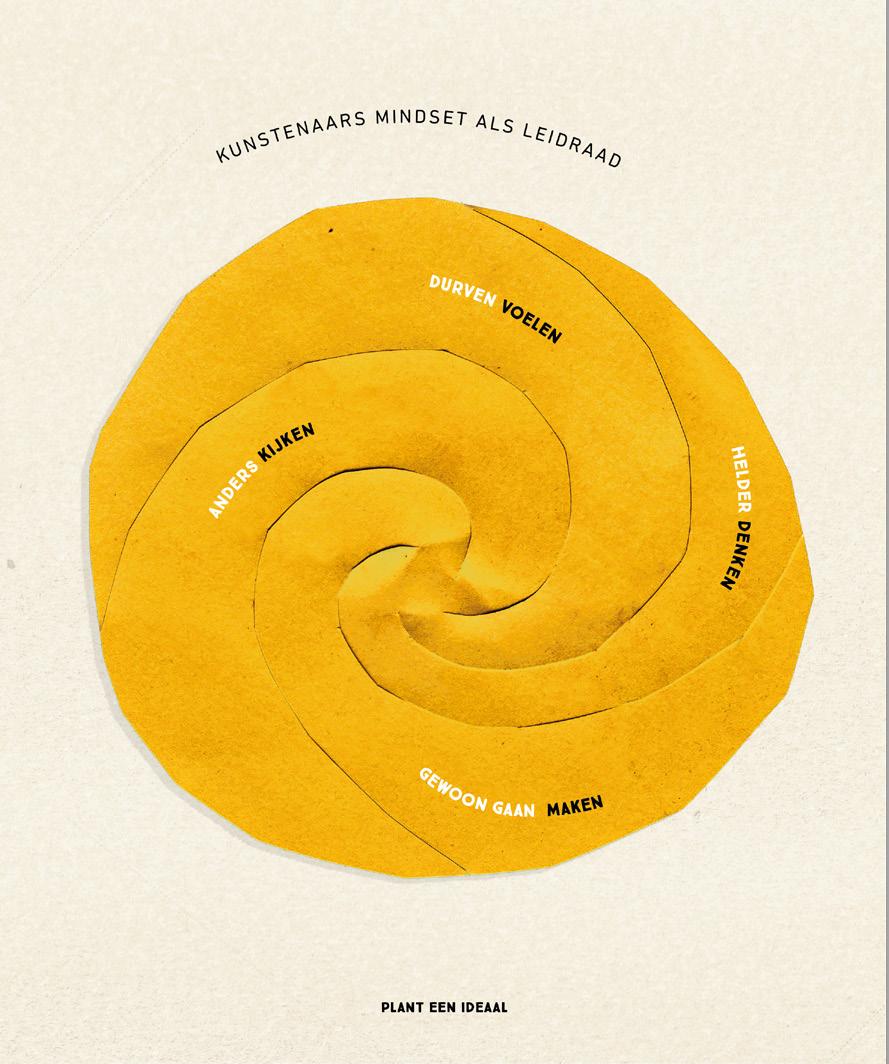
3 minute read
wat kan ik doen?
What can I do?
Verbeeldingskracht: het zit in ons. De kwaliteit om als een kunstenaar te denken, daar beschikt iedereen over. Het enige wat je hoeft te doen, is deze kunstenaarsmindset aanwakkeren. Angst voor een gebrek aan creativiteit is niet nodig. Creativiteit en fantasie zijn namelijk net als spieren: ze zijn te trainen. Arcadia daagt makers en meemakers uit om andere perspectieven te belichten.
Advertisement
Imagination: it’s inside us. The quality of thinking like an artist is something we all possess. All you have to do is fuel this artist’s mindset. Fear of a lack of creativity is not necessary. Creativity and imagination are just like muscles: they can be trained. Arcadia challenges creators and participants to shed light on other perspectives.
Tijdens Arcadia laten kunstenaars ons anders kijken naar onszelf, onze medemens en de wereld. Kunst zet ons aan het denken. Het mag schuren en nieuwe vragen oproepen. Anders kijken, durven voelen, helder denken en gewoon gaan maken. Dat zijn de elementen van de kunstenaarsmindset. De volgorde, die ontdek je zelf. Exposities, activiteiten, voorstellingen, essays en podcasts: ze dragen bij aan het loslaten van oude zekerheden, gewoonten en vaste patronen. De makers en de mienskip helpen de kunstenaarsmindset in jou te ontwaken. Je kijkt met een onbevangen blik, zoals een kind dat kan. De ‘mindset’ is geen leerdoel, maar een leefdoel. Hoe kijk je, door deze mentaliteit toe te passen, naar voorouderschap? Hoe sta je in verbinding met jezelf, je omgeving en de wereld? En hoe is dit nu anders dan hiervoor?
Op de volgende pagina’s staan fragmenten uit de Verdwaalatlas, Arcadia’s cultuureducatiemethode, gemaakt door Anne Graswinckel in samenwerking met Keunstwurk. Op pagina 143 vind je een inspirerende praktijkopdracht om je eigen voorouderschap te ontwikkelen.
During Arcadia, artists allow us to look at ourselves, our fellow human beings, and the world differently. Art makes us think. It can be abrasive and raise new questions. Look differently, dare to feel, think clearly and just start making. These are the elements of the artist’s mindset. As for the order, you’ll discover it for yourself.
Exhibitions, activities, performances, essays, and podcasts: all help us to let go of old certainties, habits, and fixed patterns. The makers and the mienskip help to awaken the artist’s mindset inside you. You start looking with an open mind like a child can. The ‘mindset’ is not a learning goal, it’s a living goal. Applying this mentality, how do you view ancestry? How are you connected with yourself, your surroundings, and the world? And how is this different from before?
The following pages contain excerpts from the Wander Atlas, Arcadia’s cultural education method, made by Anne Graswinckel in collaboration with Keunstwurk. On page 143 you will find an inspiring practical assignment to develop your own ancestry.
6.2
Voor iedereen die op een optimistische en daadkrachtige wijze aan de slag wil met de toekomst brengen Arcadia en Keunstwurk de Verdwaalatlas uit. Arcadia and Keunstwurk are publishing the Wander Atlas for anyone who wants to work with the future in an optimistic and decisive manner. A book full of intriguing research questions, inspiration and assignments.
Pagina’s uit de Verdwaalatlas. Pages from the Wander Atlas. The artist’s mindset is composed of four elements: dare to feel; look differently; think clearly; just start making. You can’t make without observing. You can’t think without feeling. The elements are all interconnected. The artist’s mindset is an open attitude, enabling us to meet the world uninhibited, playful, inquisitive and creative. This ability to connect with the rest of the world through imagination, beauty and play is not a specialism – it is what makes us human.
Art doesn’t necessarily solve problems, but it makes us look more keenly at ourselves and the world around us. In his book Het is aan ons (‘It’s up to us’), Merlijn Twaalfhoven discusses how we can tackle social issues with an artist’s mindset. Challenging tasks, such as improving the world, require creativity and imagination. By letting go of old certainties and approaching the world with an open stance, we find new solutions to obstacles.
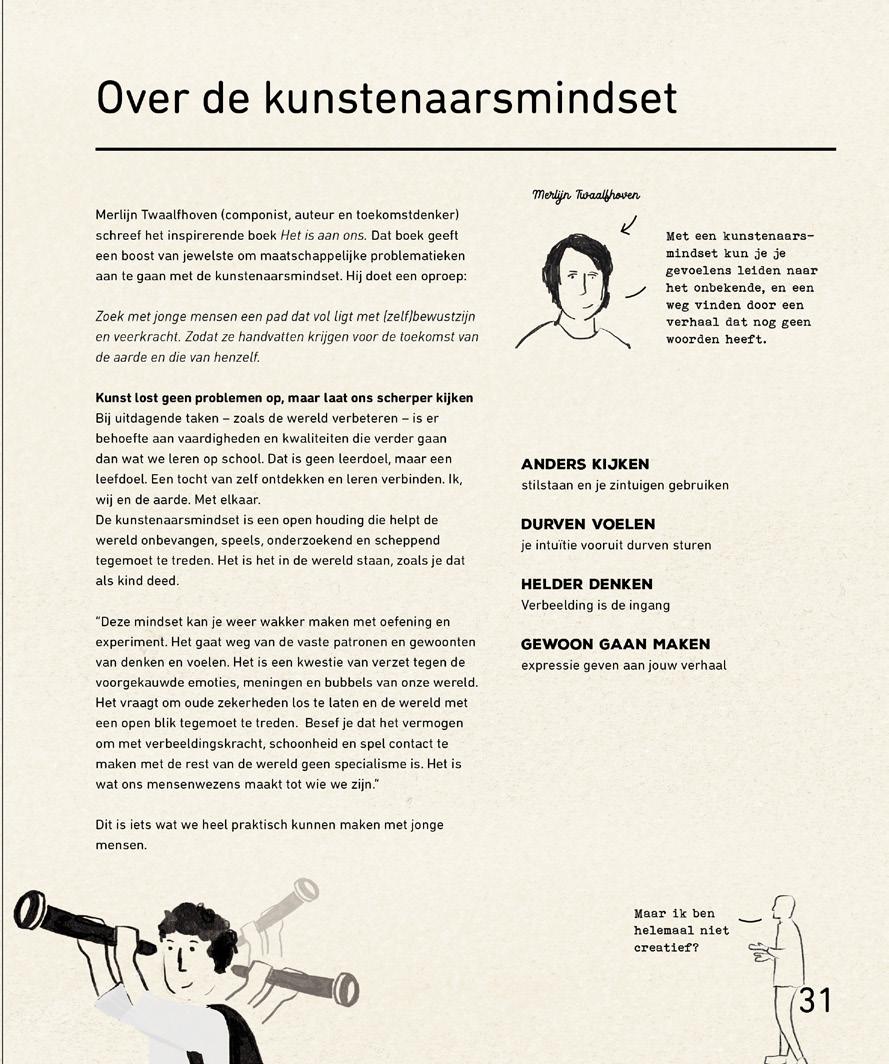
Pagina’s uit de Verdwaalatlas. Pages from the Wander Atlas. This spread discusses what the artist’s mindset means in practice. The artist’s mindset is made up of four inextricably connected elements: look differently, dare to feel, think clearly, and just start making.
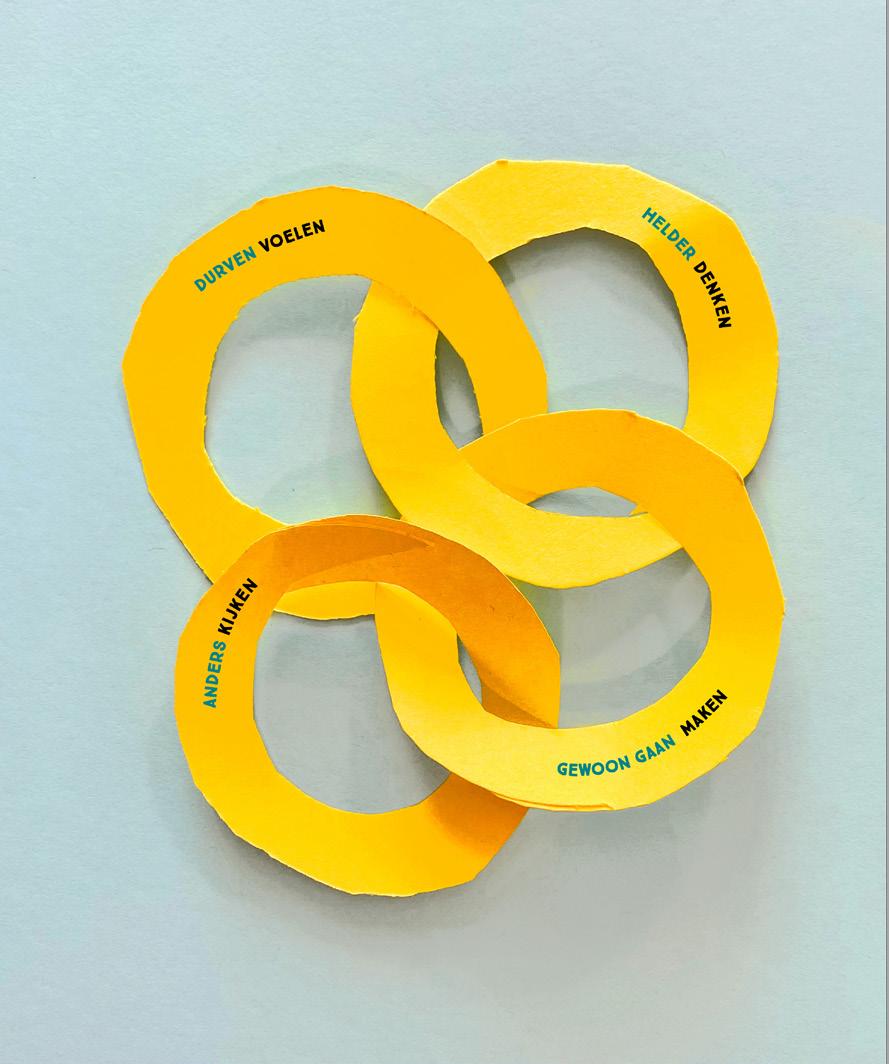
This artist’s mindset causes you to see the world through a different lens. It gives you a new way to connect with yourself and the world around you.
There is no need to worry about a lack of creativity. Creativity and imagination are muscles that can be trained!
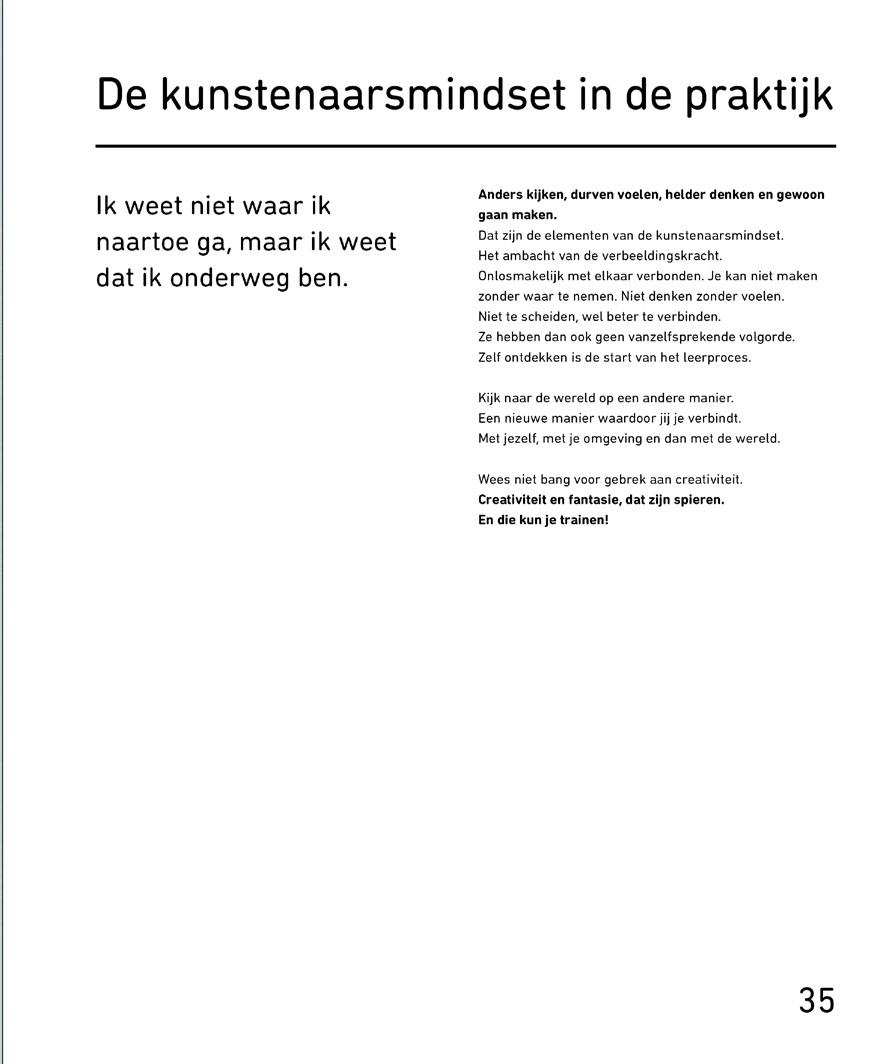
Pagina’s uit de Verdwaalatlas. Pages from the Wander Atlas. This spread is about the obstacle theory. If you find an obstacle on your path, you have to find another way forward. After the initial panic of not knowing what to do, it’s almost magical how much an obstacle can spark your creativity. Puzzles are good obstacles to spur your imagination. For example, challenge yourself to draw a landscape without using green or blue. Look for or come up with obstacles that give direction but at the same time confuse. Choosing an obstacle is already a creative thinking exercise in itself.
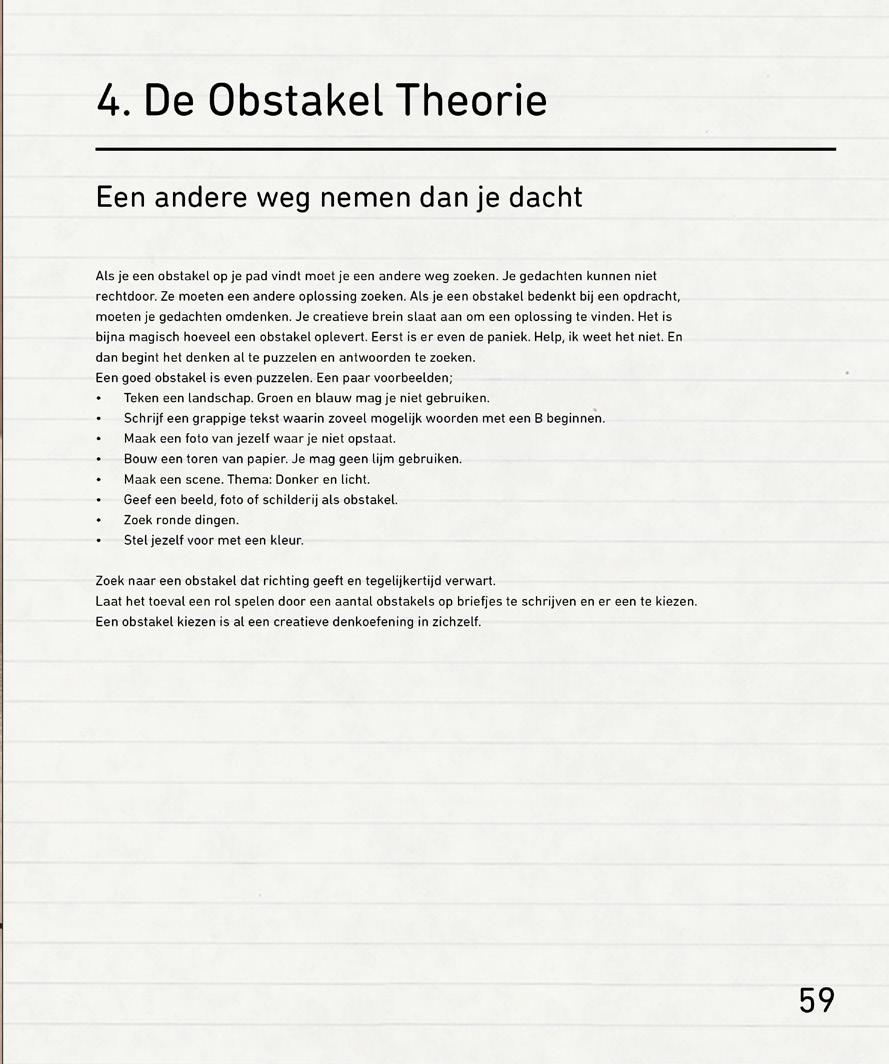
6.6
Pagina uit de Verdwaalatlas, een boek vol nieuwsgierig makende onderzoeksvragen, inspiratie en opdrachten. Samenwerking met Keunstwurk.
Page from the Wander Atlas, a book full of intriguing research questions, inspiration and assignments. Collaboration with Keunstwurk.








